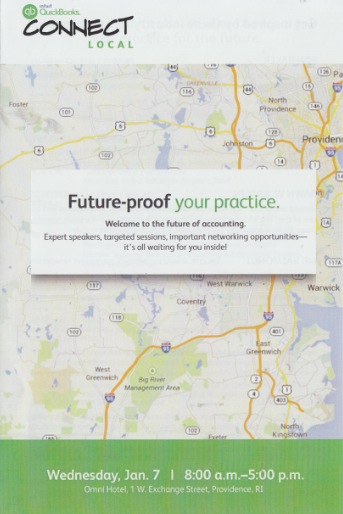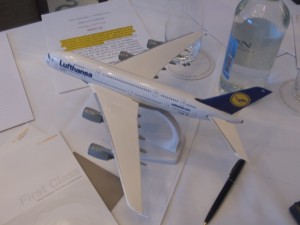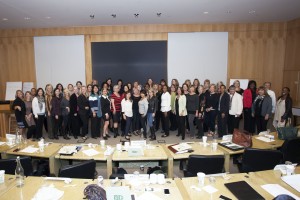This is a test
This is a test
January 15th, 2015This is a test
January 14th, 2015This is a test
Today is National Clean Your Desk Day
January 12th, 2015Today is National Clean Your Desk Day. It is also National Kiss a Ginger Day and National Marzipan Day, but since a clean desk is relevant to me, and to this blog, I’ll stick with the desk. And, in keeping with today’s theme, I have been following the publishing phenomenon that is The Life-Changing Magic of Tidying Up: the Japanese Art of De-Cluttering and Organizing, the international bestselling book that has sold over two million copies to date. Author Marie Kondo promises that if you organize your home once, you will never have to do it again. (Maintenance is easier than the initial process of organizing and de-cluttering.) I suppose the same principles apply to your office and to your desk. Kondo has an infectious enthusiasm for the calm and motivated mindset a tidy home can inspire. I find it less stressful when the clutter is gone and I do feel motivated to start tasks when I don’t feel overwhelmed by looking at piles of stuff.
So in the spirit of January 12, I cleaned my desk. I also took to heart Kondo’s advice to only keep those items that “spark joy”. My desk and my office have pretty organizing clips, attractive and festive folders for sorting paperwork and my favorite fountain pens. There are a few national retailers that offer name-brand desk accessories that may cost a few dollars more than the generic versions, but they are affordable luxuries. And they make starting work each morning even more pleasant, so I see these items as a good investment. While Kondo surely didn’t have business resilience in mind when she wrote her book, a resilient business is de-cluttered and organized. In an emergency situation, you don’t want to waste time searching for an important file. You don’t want to waste that time on such needless tasks in your normal business day, either. So now that my desk is clean, I will resume work!
Inspiring Image
January 10th, 2015Many people have asked me how I came up with the name for my business, Prisere LLC. It was not an easy task. The challenge was to come up with a name that is unique, memorable and available (meaning no one else is using the name in commerce and the URL is available to register a website – the Facebook, Twitter and other social media handles must also be available). I put together a spreadsheet and generated over 400 naming concepts before finally coming up with Prisere.
The concept of the business name derives from the vesper iris, the most resilient flower. It can thrive in all climates and even bloom in the absence of sunlight. Indeed, the vesper iris would blossom as the faithful were going to their evening prayers, or vespers; hence, the name. Of course, the iris also enables vision by allowing light to enter the eye.
Prisere is an anagram of the vesper iris, minus the letter “V”. Variations of the iris include the Louisiana iris and the fleur-de-lys, the symbol of New Orleans, and the Japanese iris, significant as both Louisiana and Japan are associated with renewal following major disasters. The Siberian iris can even bloom in the frozen tundra. The prisere is the ecological succession to the climax community, in which populations of plants and animals remain stable and exist in balance with each other and with their environment. It reflects the concept of sustainable development. As such, Prisere is the name of the business and the iris is featured in the logo.
The tagline (“Deep rooted. Farsighted.”) refers to the deep roots that enable us to weather the storm the foresight to prepare for the storm, again reflecting the word iris as representing both a flower and a part of the eye. Stroock & Stroock & Lavan LLP did masterful legal work in registering trademarks for the name Prisere and its logo and tagline. The Twitter and Facebook pages for the business both show the iris blooming in the frost.
This beautiful watercolor of the iris is displayed in my home office. It is the work of Ms. Suwannee Sarakana, a Thai artist whose paintings have won a number of international and regional awards including first prize at the International Watercolor Competition in Rome. Her paintings are included in the collections of the National Gallery of Thailand, the National Gallery of Singapore and the Museum of Contemporary Art in Bangkok. I find the imagery inspiring and I hope others will, too.
This is a test
January 9th, 2015This is a test.
Intuit’s View of the Future
January 8th, 2015Yesterday I participated in a day-long program of Intuit titled “Future-Proof Your Practice”. Intuit is the maker of the QuickBooks small business accounting software and appropriately, the speakers addressed the accounting needs of small businesses. In addition to executives from Intuit, the roster of speaker included representatives from companies that are part of the QuickBooks ecosystem, fellow Wiley author Ron Baker who shared with us copies of his book Implementing Value Pricing, and accountants who are Certified QuickBooks Pro Advisors. Intuit kicked off the day with a presentation on the four macro trends impacting small businesses: social media, mobile devices, cloud computing and big data. What struck me was that each of the speakers, and this was not by design, touched on an aspect of small business disaster preparedness, largely aligned with the benefits of hosting data in the cloud.
For example, Barry MacQuarrie CPA mentioned that most of the commercial office buildings in the city where he works have only a single pipe for an Internet connection, underscoring the importance of redundancy. If the Internet connection is interrupted, many small businesses would lose sales and productivity. Dawn Brolin CPA presented the example of a client undergoing an acrimonious divorce whose estranged wife burned all of the receipts for his business expenses, with the result that the IRS disallowed most of the deductions. Had the client scanned in and digitized his receipts and stored them in a secure online facility, he would have been protected. MB Raimondi CPA shared how she had to take her laptop to the nearest Starbucks to use a Wi-Fi connection to continue working when SuperStorm Sandy caused a power loss in her office. The examples were compelling and the insights very helpful. If Intuit offers a “Connect Local” event in your community, do not miss it. It was time well spent to improve my business.
This is a test
January 7th, 2015This is a test
This is a test
January 6th, 2015This is a test.
Small Businesses and Global Travel
January 5th, 2015Reflecting on the accomplishments of the past year, I have to include my service on the Globility Board as one of the highlights. The word “globility” was invented by Francis X. Gallagher, publisher and CEO of Global Traveler, to define the magazine’s mission as that of being open to new cultures and experiences. Gallagher formed the “Globility Board”, an elite group of highly experienced international business travelers, to offer feedback to both the editorial team and to the advertisers as to our preferences for airlines, hotels and other travel experiences. The article announcing the newly-formed board quotes me as saying that “As an entrepreneur, I recognize the importance of face-to-face meetings to build relationships, but I am also attentive to the costs associated with business travel; I seek to maximize value for dollar spent. I am willing to pay for amenities that enhance my travel experience and increase remote productivity, but I want to see the value for the spend. That’s a different approach from across-the-board cost-cutting that is often in place in larger corporations.” I was delighted to learn that more than one-half of my fellow subscribers to Global Traveler are small business owners, so it appears we share the same philosophy. One of my favorite features of the magazine is the series of articles on health and safety measures for business travelers, so we really do share a viewpoint on business travel!
At our first board meeting, we were welcomed to New York City’s Benjamin Hotel, part of the Denihan Hospitality Group. We met one another at a cocktail and dinner at Rothmann’s Steakhouse and then spent the following day reviewing ideas with in sessions with executives from the Denihan Hospitality Group, South African Airways and Lufthansa and then the editorial team responsible for the web and print editions of the magazine. We had our closing dinner at the National Restaurant, housed in the Benjamin Hotel, where we were impressed with the culinary talent of Chef Geoffrey Zakarian and his team. Our second meeting took place at the Westin La Paloma Resort in Arizona. I welcome your feedback on business travel experiences that I can share with my board members. It is a rare occasion when I meet people who have accumulated as many frequent flyer miles for business as I have done. I look forward to our next trip and to giving feedback to leading airlines and hotels as to the preferences of small business owners. I am also pleased that the magazine is the only one of which I am aware that provides safety and health tips for business travelers – as we need to be resilient no matter where we are working.
Executive Education for Women-Owned Businesses
January 4th, 2015As I continue to reflect on the achievements of the past year and plan for an even better 2015, I have to give credit to the Women’s Business Enterprise National Council for all they do to accelerate the growth of women-owned business enterprises (WBE’s). I am especially grateful for my participation in WBENC’s signature executive education program last year. The Tuck-WBENC Executive Program is an intensive, five-day executive development program that focuses on increasing the competitive advantage and robustness of each participant’s own business. About 50 WBE attendees formed a learning community that continues to provide a source of support, expertise, opportunities, and strategic alliances long after our graduation.
This executive development program is designed to help WBEs that are beyond the startup phase to assess, improve and grow our businesses. To survive and prosper in today’s fast-moving, highly volatile business climate, WBEs must ensure we have all the essential components of a highly integrated business, such as:
- Financial analysis and decision making
- Clear and focused strategy
- Superior value
- Creating customer orientation
- Optimal core business processes
- Motivated and empowered staff
- Carefully managed relationships for long-term success
Graduate professors from the Tuck School of Business at Dartmouth engaged us in learning and discussions specifically designed to make a difference in how we think about and operate our businesses when we returned from the program. The primary case study is each participant’s own business. Through collaborative learning groups, we applied the tools we learned to assess and improve our businesses, using the same diagnostic and strategy-implementation approaches that external consultants would use.
The 2014 program brought together a dynamic group of women business owners with the world-class faculty of Dartmouth’s Tuck School of Business and IBM, one of America’s Top Corporations for WBEs. IBM has been the program’s sole underwriter from its start and continues to demonstrate tremendous impact on WBEs, our strategic growth and created an unbreakable bond between the WBE participants.
Held at the IBM Palisades, Dolce property in Palisades, NY, IBM hosted the program and brought key staff from procurement, supplier diversity and marketing to network with the group throughout the week. I’d like to extend special thanks to IBM for its continued support of the program and providing stellar corporate representation: Ginni Rometty, Carol Sormilic, Patrice Knight, Michael Robinson, Luis Cuneo and Katy Brownley. Also in attendance at the 2014 Tuck-WBENC Executive Program were President & CEO of WBENC, Pamela Prince-Eason and WBENC Board Chair and Director of Supplier Diversity for Raytheon, Benita Fortner.
I’d particularly like to thank Pitney-Bowes and Laura Taylor for surprising me by underwriting all of the costs of my participation in the program. I had the good fortune to connect with Pitney Bowes after reading the company’s white paper sharing best practices and lessons learned in business continuity when the company experienced a devastating fire at one of its primary mail sorting facilities in Texas. Thereafter, Pitney-Bowes invited me to join their executives in speaking on a webinar about best practices for small businesses to remain resilient in the face of threats. Pitney-Bowes surprised and delighted us once again when they covered the costs for me to serve as the keynote speaker for Rhode Island’s first ever business continuity conference offered by the Rhode Island Emergency Management Agency. More than 400 senior representatives from the public and private sectors came together for a day of learning about how to build a more resilient future for the state. The Kirkbrae Country Club in Lincoln hosted the event, which included complimentary breakfast and lunch for all of the participants. Pitney-Bowes also provided copies of my book for each participant.
I cannot say enough good things about the WBENC-Tuck executive education program and all of the companies that generously support it, in particular, IBM and Pitney-Bowes. The faculty of the Tuck School of Business at Dartmouth were amazing as they would join us in discussions until very late at night, making this one of the most intense learning experiences I can remember. If you are considering applying to this program, please let me know if there are any questions I may answer. I am grateful for the opportunity to participate in the program; it was truly one of the highlights of 2014. And I hope I can be a more effective leader to scale and grow Prisere LLC to justify the investment in capacity-building made by WBENC, Tuck, IBM and Pitney-Bowes.




